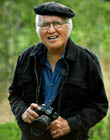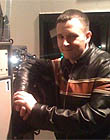|
|
This topic comprises 7 pages: 1 2 3 4 5 6 7
|
|
Author
|
Topic: New DVD and BluRay
|
|
|
|
|
|
|
|
|
|
|
|
|
Paul Mayer
Oh get out of it Melvin, before it pulls you under!

Posts: 3836
From: Albuquerque, NM
Registered: Feb 2000
|
 posted 06-16-2012 08:16 PM
posted 06-16-2012 08:16 PM





One of my last blu-ray purchases (sometime in late 2010) was one I really really enjoyed (if it had been a tape- or stylus-based playback format it would be worn flat by now, I played it so much): Joe Hisaishi in Budokan
It's a concert from 2008 celebrating the Japanese opening of Studio Ghibli's Ponyo and a celebration of the 25-year collaboration between composer Joe Hisaishi and director Hayao Miyazaki. Recorded by NHK at the 14,000 seat Tokyo Budokan, the sold-out concerts featured a greatly augmented (doubled to 200 musicians) New Japan Philharmonic World Dream Orchestra (Hisaishi is the pops music director for that band when he's not doing soundtrack work), a combined chorus of 700, a 100-voice children's choir, six featured singers, and a combined 160-piece marching band (two local high schools and two local junior high schools), all under the direction of Joe Hisaishi conducting from the piano - all together some 1160 performers on stage. Very Mahlerian to say the least! ![[Smile]](smile.gif)
The two-hour program consisted of the music Hisaishi has composed over the years for Miyazaki's films created at Studio Ghibli (1984-2008). Many of the concert segments featured scenes from these films projected overhead on a huge screen (1.85 AR, approx 70' screen width, four overlaid NEC (I think) projectors).
Video quality ranged from good to acceptable - some of the images are fairly noisy. Audio on the blu-ray available in three choices - LPCM 2.0, LPCM 5.1, and DD 5.1. And no region code - it should play anywhere. Japanese (and some English) subtitles available. There is also a DVD version.
I absolutely cherished this disc!
| IP: Logged
|
|
Paul Mayer
Oh get out of it Melvin, before it pulls you under!

Posts: 3836
From: Albuquerque, NM
Registered: Feb 2000
|
 posted 06-17-2012 12:09 PM
posted 06-17-2012 12:09 PM





Since I feel like it, here's two more Japanese blu-ray recommendations of late - Kinji Fukasaku's final film Battle Royale, and Beat Takeshi's updating and remake of the classic samurai "chambara" franchise, Zatoichi.
With Battle Royale, Fukasaku, a veteran of 50 some odd years experience creating violent yakuza and other exploitation films, was at the top of his game in 2000 with this bit of old fashioned ultra violence. In addition to Clockwork Orange, this controversial film has invited audience comparisons with other films like Lord of the Flies and most recently The Hunger Games.
At the turn of the new millennium Japan's economy has collapsed. With 10% unemployment, a nationwide wave of youthful violence and delinquency envelops the nation. Fearing loss of control, the national government imposes the Millennial Education Reform Act, a.k.a. The Battle Royale Act. Each year, one class of 9th graders is selected at random, gassed and sent to a deserted island, equipped with randomly selected weapons, and given their assignment: "Today's lesson is... you kill each other." They get three days; only one of their group can remain standing or they will all be killed. The survivor is then released back into society as a warning to mind their manners.
From Nikki Disney's Amazon review: quote:
Some pupils embrace their mission with zeal, while others simply give up or try to become peacemakers and revolutionaries. However, the ultimate drive for survival comes from the desire to protect the one you love. Battle Royale works on many different levels, highlighting the authorities' desperation to enforce law and order and the alienation caused by the generation gap.
Fukasaku used child actors of about the right age to play the doomed class of 42 junior high school students (the 'making of' documentary includes footage of Aki Maeda, the lead female student in the story, celebrating her 14th birthday on the set). Americans will also recognize another actress playing one of the students, Chiaki Kuriyama, who appeared as the teenaged assassin in the Kill Bill films. Rounding out the superb casting is "Beat" Takeshi Kitano, as the group's original 7th grade teacher, brought back in to run this "game."
It's violent, it's bloody, it's twisted, and it's very very satisfying to watch. It's another title that I've worn the pits down watching. The disc I have is part of the British Arrow Video 3-disc limited edition box set (theatrical cut (the one to watch), director's cut, special features disc, plus various pamphlets, post cards, and a poster). Fortunately there's no region code. Video-wise it's a bit dodgy, but it is probably the best this title has ever looked on video. The sound is incredible, in Japanese with English subtitles. For years no North American distributor would touch this (I was lucky to see it at it's one-and-only Los Angeles screening at the Egyptian, with Kukasaku there for Q and A), but as of this year there is a domestic release available.
* * * * *
The other one I've played endlessly is Beat Takeshi's 2003 film Zatoichi. There were 26 films in the original Zatoichi series from the '70s through the '90s, all starring Shintarou Katsu as the famous blind swordsman.
In these films the Edo-period story is always the same: Zatoichi, appearing to be a harmless wandering old blind massuse with a yen for gambling and drinking, shuffles into a village. Said village is being controlled/bullied/extorted by yakuza thugs. Zatoichi turns out to be not so harmless - he is an incredible sword master with his red blind man's cane concealing a katana. He tries to be a pacifist, but eventually comes to the aid of the beleagered villagers, slicing and dicing his way through the thugs, usually with a 10-1 ratio against him. In the end, the villagers celebrate getting their freedom back, and Zatoichi shuffles off to the next installment.
This remake works quite well. Kitano plays Zatoichi pretty much the way we remember him from the '70s, except for his now peroxide hair. The sets, the costumes, and the fight choreography are sumptuous and meticulously researched to be accurate for the period. The characters all get their background stories told as well, more so than typical in most chambara stories. CGI is used for the blood, which flows and flows and flows. Geysers and fountains of blood. And the whole thing is captured in color and in 'scope, as God intended. Oh, and the final celebration scene... it's a tap dance number. The whole cast, in Edo-period costume and tap-equipped geta clog sandals. You just have to see it for yourself. In Japanese with English subtitles. The blu-ray I have is the Artificial Eye release from the UK, without region coding. The US Miramax release is marred by the over-boosted colors of the transfer, and the greatly cut down special extras.
Again, another violent and bloody and very satisfying (as these old revenge stories always are) couple of hours in front of as big a screen as you can muster.
| IP: Logged
|
|
|
|
Leo Enticknap
Film God

Posts: 7474
From: Loma Linda, CA
Registered: Jul 2000
|
 posted 06-18-2012 08:23 AM
posted 06-18-2012 08:23 AM





quote: Claude S. Ayakawa
The Beethoven disc is also grood but the camera work could have been better as well as the sound. This disc has been out for several year now and that may be the reason it is not up to current standard in my opinion.
I've got a set of LPs of Baremboim playing the Beethoven concertos from the late '60s, and can't say that any of them particularly grab me. On the later ones especially he drags the tempo, emphasises phrases and ornaments (and the rondo in the B-flat concerto is almost as slow as a funeral march!), lets the overall pace go and it's generally a bit frustrating. It could be that he was very early in his career when those recordings were made, though my gut feeling is that like many pianists whose real passion is Mozart, he just doesn't 'get' late Beethoven instinctively, and vice-versa.
There's a video on YT somewhere of Wilhelm Kempff playing the final movement of the Hammerklavier when he was well into his 80s (can't find it from a YT search just now - sorry). Like the records and videos Horowitz made in the final years of his life, you'd expect it to be elegant but unspectacular: in fact, it's one of the most captivating performances I've ever seen on TV. You can see the reason why as soon as the camera zooms in on his hands - they're absolutely enormous! He could span almost two octaves while barely needing to move his wrist. He'd lost absolultely none of the power you can hear in his performances from the '50s and '60s.
A few years ago when I was learning the sonata no. 7 in D I listened to a Kempff record of it a lot, but never could get the phrasing quite right, especially the "almost, but not quite" syncopation in the third movement. Of course the main reason is that I'm a very poor amateur pianist whereas he was one of the world's greatest professionals, but I can't help wondering if the sheer size of his hands enabled him to use fingering approaches that for anyone else would be suicidal.
| IP: Logged
|
|
|
|
|
|
|
|
|
|
|
|
|
|
All times are Central (GMT -6:00)
|
This topic comprises 7 pages: 1 2 3 4 5 6 7
|
Powered by Infopop Corporation
UBB.classicTM
6.3.1.2
The Film-Tech Forums are designed for various members related to the cinema industry to express their opinions, viewpoints and testimonials on various products, services and events based upon speculation, personal knowledge and factual information through use, therefore all views represented here allow no liability upon the publishers of this web site and the owners of said views assume no liability for any ill will resulting from these postings. The posts made here are for educational as well as entertainment purposes and as such anyone viewing this portion of the website must accept these views as statements of the author of that opinion
and agrees to release the authors from any and all liability.
|

 Home
Home
 Products
Products
 Store
Store
 Forum
Forum
 Warehouse
Warehouse
 Contact Us
Contact Us




 Printer-friendly view of this topic
Printer-friendly view of this topic









![[Smile]](smile.gif)

![[thumbsup]](graemlins/thumbsup.gif)





